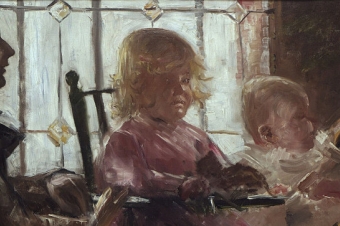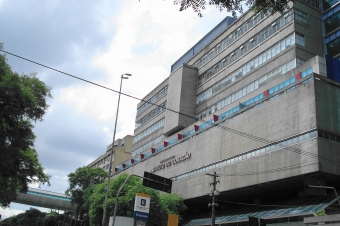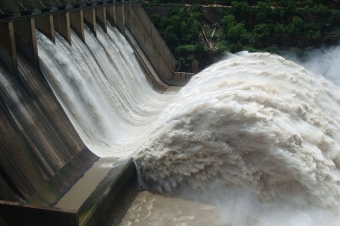Summary:
It is an activity that focuses on the teaching and implementation of film production use in the realization of the academic work about human rights, for Undergraduate and Graduate students in Law and in other university courses.
Objective:
- GENERAL GOALS: The activity is within the class goal as a final work by making a film as fiction or documentary. It contributes in the study, reflection and presentation of content related to human rights theme. From the film production, there are new didactic and pedagogical methods incorporated in the law education and other social areas as this method helps to create other forms of academic and scientific production in Law, so necessary today, to extend the possibility of using films produced by the students as didactical material in the classrooms, conferences and congresses.
- SPECIFIC GOAL: with this activity, the students have the opportunity to develop their contact with the visual arts, with music and literature, and then improve their sensitivity to human rights theme and strengthen ties with other colleagues and learn to work in teams with exciting work, professionals who, in turn, will involve happiness and companionship between them. Pre-film editing techniques of knowledge are passed on (cinematic language, development of the characters, story and cinematic argument, writing script, story-board, spreadsheets and film plants), film editing (use of colors and sounds, use of cameras and lighting, how to shoot, conducting dialogues, etc.) and post-editing films.
Also, there is still no a widely acceptance for the presentation of academic and scientific papers in the movie format - fiction and documentaries - in Conferences and Seminars, both national and international, that are authored by participants; Accordingly, the final works of the classes of Undergraduate and Graduate, especially in law, use little - or nothing – of this methodology; the monographs works of the end of Undergraduate course and defenses of dissertations or Graduate theses rarely have this feature. In this sense, the progressive implementation and methodology of academic-scientific studies constitute a rich contribution to the dissemination of research material and the results of academic and scientific studies.
- DEVELOPED ABILITIES: There are worked various abilities and skills such as elaboration of a story that can be filmed, the preparation of argument and film script, camera use in filming and post-editing films.
Dynamics:
- TEACHING METHOD: production of films and documentaries, whereby students contextualize their learning.
- REQUIREMENTS:
- DYNAMICS: the learning process begins with the presentation of the "Self-Methodology for cinematographic production", developed by Mexican filmmaker Carolina Rivas. With this methodology the student learns to perform, in a professional manner, films for achieving his/her academic and scientific papers in each of the stages of the production of a film; They learn to work in teams as the final product of this methodology will be making a film, designed, developed, discussed, set, played, musicalized and edited by the students themselves. Additionally, their application has a very important result for the successful development of the experience, as it contributes to the development of artistic creativity and the rescue of the subconscious feelings and greater sensitivity and sensory power. The students have a direct role in the application of this methodology, implemented from lectures with explanation of cinematographic production techniques, projection of pieces of film with examples of the explained content and by conducting exercises (theoretical and practical) by the students. It is important to note that the students have the opportunity to develop their contact with the visual arts, with music and literature, improve sensitivity to human rights themes and strengthen ties with other colleagues and learn how to work in teams with exciting work, professional and that, in turn, will involve happiness and companionship between them.
Throughout the course, the students must perform several exercises and activities in which they will be developed and applied to the acquired knowledge, gradually; these tasks are analyzed and discussed in the classroom. In addition, they should make a film at the end of the Course, these tasks are of fundamental importance for progressive development and application of knowledge on filmmaking with the maturing of the ideas to achieve the realization of the film with success and satisfaction. Examples of exercises:
EXERCISE 01. (Individual): Methodology for self-knowledge to cinematographic production:
1 - Write one autobiographical news that answers the question: What event has really marked my life? What was the event that deeply moved me?
2 - Write on a national or international news and give my opinion on what moves me in this story. 3 - Rewrite a short story, novel, poetry, music, etc. and organize the events from my point of view (submit the original and the rewritten).
4 - Describe a sound associated with a singular emotion and that gives a secret influence on my mood.
5 - Choose a photograph by the impression that it causes to me, so that I can create a story.
EXERCISE 02. (Individual): Develop a "story that can be shot", in cinematographic language.
EXERCISE 03. (team): from the choice of a story, elaborate a cinematographic argument and the description of the characters.
EXERCISE 04. Recreate the idea of "The sprinkler watered" (with camera movement, different plans). They must use a spreadsheet to control some data (number, used time and decision quality, description of shooting plans, with camera movements and without the zoom use).
On the last day of class in which was used this methodology, each of the teams that has divided the class present their film for the rest of the Group. There were moments of great pride for the makers of the film, members of groups and a lot of excitement and satisfaction for all the present. The groups had to present the final work as follows:
1 - a DVD with short film produced by the Group (10 to 20 minutes), including the credits at the beginning and end of the film;
2 - a folder that should contain: name and registration number of each of the Group members; the indication of interest corresponding to each of the Group's members in the diverse tasks of film production, namely:
1) preparation of the cinematographic argument;
2) description of the biographies and characteristics of characters;
3) elaboration the cinematographic script (the rules on script development must be strictly obeyed;
4) development of story-board and spatial distribution in each of the scenes (with the location of characters, furniture, objects and cameras in each of the scenes);
5) direction;
6) direction helper;
7) other technical functions (example: sound technician, electrician, responsible for the locker room, the makeup, responsible for searching for objects, furniture, etc. for the film;
8) Presentation (insert character name and member that represented you);
9) in charge for the post-editing;
10) other tasks.
- ATTENTION IN THE CLASSROOM: the monitoring and constant encouragement by the responsible professor for the success of the activities.
Evaluation:
- GRADE EVALUATION: the students must perform various tasks throughout the Course, for a progressive development and application of knowledge about filmmaking. Each of these tasks is an object of evaluation in the relevant discipline and the final mention of each student to the class will be a result of their performance in achieving each of filmmaking exercises and contribute to the preparation of the film of his/her team.
Observation:
The educational materials produced by students (both films as the scripts, story-boards, etc.) that have attended courses using this methodology, it is used largely by students of new classes that will start to learn the methodology. The films made by students are also presented as didactical material in the presentation of the contents relating to human rights. Examples of films can be found at the following links:
- https://drive.google.com/file/d/0BwIRSXQC8JdKOVdKOEpKUjdDMmc/view?usp=sh...
- https://drive.google.com/file/d/0BwIRSXQC8JdKdTBVdUhEc1BQWjg/view?usp=sh...
Copyright from the cover page image:
Image: "The screen of Piccadilly Cinema in Perth, Western Australia", 2006, available Wikimedia Commons user "Flickr_upload_bot" , photographer: Rob Chandler, under the Creative Commons BY 3.0 license.






